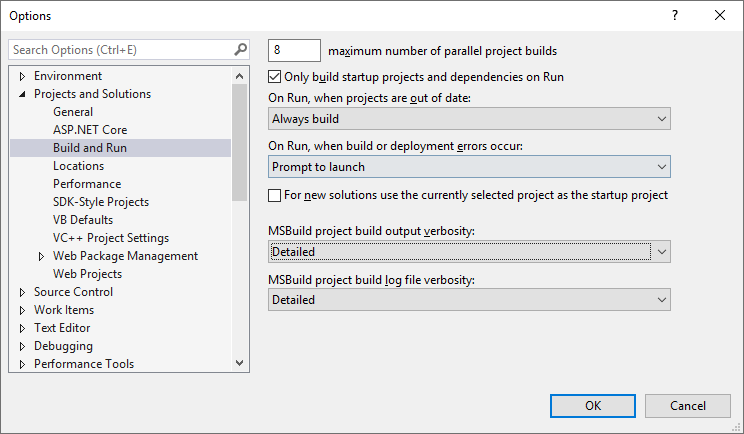
If you move your rectangles, tables and textboxes around in your layout, you can unattentionally cause unwanted behaviors of your report. If a report reaches a complexity where you have multiple parent-child relationships between your controls and some rectangles or tables, then you should think about switching to Visual Studio. This has always been the reason for me to use Visual Studio when designing complex reports like purchase orders or sales invoices. If I click on a control in the Document Outline, the control is highlighted in the design on the right side (the red borders are mine, the highlighting done by Visual Studio is a bit more subtle). It shows me the hierarchy of the report with the parent-child relationships between the controls. It opens the Document Outline on the left. If your Document Outline is not visible when you open Visual Studio, try the shortcut Ctrl + Alt + T. rdlc design of a Sales Invoice (Standard report 1306). So, what the heck does that mean? Let’s look at a familiar example. “I have no idea what you are talking about. Visual Studio offers you the possibility to see the hierarchy of the report controls. If there is one big reason to choose Visual Studio, then it is probably this one. To decide which one suits your needs the best, it is good to know the differences between the tools. I guess the more experienced you are, the more you will tend to use Visual Studio instead of Report Builder. It is hard to tell which of the tools is better in general. “So it is kind of the same, but not the same, right?” Well yea, kind of. Layout in Visual Studio: Visual Studio or Report Builder – Which Is Better for RDL Reports? Right click on the file -> “Open Externally”. The only thing I changed is the file extension so I can open it in Visual Studio. The file “R101_CustomerList.rdlc” is a copy of the file “R101_CustomerList.rdl”. If I make a right click and choose “Open Externally”, Report Builder opens. “R101_CustomerList.rdl” is the file I downloaded. rdl file with the “Custom Report Layouts” page. rdl layout from the custom report selection in business central. In the below example I downloaded the standard. Change the file extension from “.rdlc” to “.rdl” and you can open it with Report Builder. If I create a report with the file extension. RDL Reports and RDLC Reports look the same. I will not go more into detail here because I do not want to lose you to the confusion train. RDL Reports on the other hand are executed on a server. As the name already suggests, RDLC reports are executed on the client.


RDLC means Report Definition Language Client-side. For this reason, I will exclude word layouts from this post and cover them in a later post (or never, as I truly despise them at times). They differ greatly from layouts generated by Microsoft Report Builder (. Layouts created with Microsoft Word have the file extension. When it comes to designing RDL reports in Microsoft Dynamics NAV / Business Central, there are three different programs which you can use:Įspecially as a beginner you will be confronted with a decision between these two fellas: Visual Studio 2017 or Report Builder 2016?


 0 kommentar(er)
0 kommentar(er)
